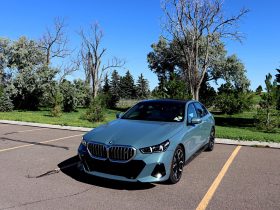Plug In America has just announced that Tesla Motor’s Roadster battery packs will retain an average of 80 to 85 percent of their capacity after 100,000 miles driven, according to their latest study published today. The nation’s leading plug-in vehicle advocacy organization released its findings at the Teslive Tesla users conference.
What is the big hoopla? Maybe I’m feeling a little vindicated here but I remember starting to write about electric cars and hearing how they would never work. Over the years, the reasons changed as quickly as they were debunked. Fast forward six years later, and a Lightning Motorcycle takes the podium at Pikes Peak. Originally, Tesla Motor’s best initial projections were a 70 percent capacity retention after five years of driving, or 50,000 miles.
According to Tom Saxton, Plug In America’s chief science officer, who lead the research: “Our study also found no discernible effect of climate on battery-pack longevity. Roadster owners in hot climates are not seeing noticeably different battery capacity profiles than owners in moderate climates.”
The data was gathered combined with anonymous data from OpenVehicles.com, a system that specializes in aftermarket vehicle monitoring. The first study Plug In America conducted was with the Nissan LEAF EV last year, as well as that of the Toyota RAV4-EV and the new Tesla Model S. The purpose of these studies is to help consumers better understand battery reliability, support industry-wide adoption of standard battery performance warranties, and inform consumers making extended-warranty purchase decisions.
So here we are, in a very few short year, roughly six years, electric vehicles have achieved what gasoline cars took so long to do the first four decades of their existence.





